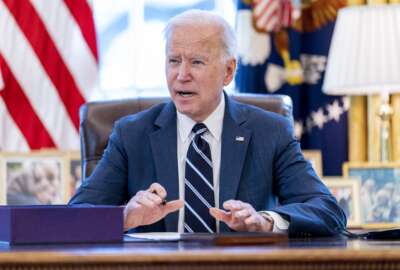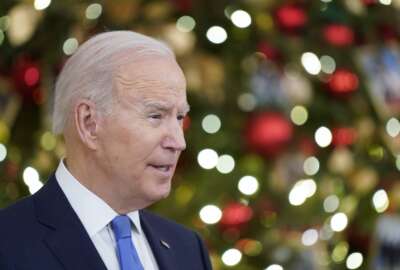Congress upholds pay freeze for political appointees, vice president through end of 2022
Congress continues the pay freeze for political appointees and the vice president, a trend that’s been in place since at least 2014.
Many senior political appointees, as well as the vice president, will not see a pay bump for at least the rest of this year. Congress will continue a pay freeze on their wages through at least the end of calendar 2022.
The Office of Personnel Management released guidance on Tuesday announcing that the pay rates for those groups will stay at the same level as they were for 2021. Those rates have remained flat since 2014.
The announcement comes after OPM in December announced that Congress extended the pay freeze to at least Feb. 18, 2022, under a continuing resolution. OPM is implementing the extension, which is a provision in the omnibus bill for fiscal 2022.
The suspension on pay raises for those groups has remained in effect since at least as early as January 2014. The extension of a pay freeze for senior political appointees and the vice president has been customary for the last eight years.
In particular, the freeze covers employees who are serving in an Executive Schedule position and who hold a position under a political appointment, a chief of mission, an ambassador-at-large, a non-career appointment in the Senior Executive Service, a limited term or limited emergency appointment, as well as any other political appointees who are paid at or above the official rate for the Executive Schedule IV level of $176,300, OPM stated.
The payable rates for Executive Schedule individuals covered by the freeze range from $148,500 to $203,500. According to OPM, those are the same rates applied during 2021 for the groups affected by the pay raise suspension.
Those not affected by the freeze are General Schedule employees, including Schedule C employees within that system, Foreign Service employees, non-career SES and other political appointees paid below the rate for Executive Schedule IV, as well as SES members who have chosen to retain basic pay for SES (the 2022 rates for that can be found here).
The vice president’s pay rate will remain at $235,100 through the end of this calendar year, OPM stated.
The pay freeze also applies to bonuses, discretionary awards and other similar types of payments for senior political appointees, OPM wrote. This type of suspension on bonuses has existed since at least as early as 2010.
The action also applies to any increases that come as a result of locality pay adjustments.
This pay raise suspension has become almost expected — it has remained in place for nearly a decade, since lawmakers put the freeze into a 2014 omnibus bill to hold the pay rates for those groups at 2013 levels. Similar provisions have persisted since that time, throughout a variety of omnibus bills and continuing resolutions over the years.
In contrast to the raise suspension for those senior groups, President Joe Biden is requesting a pay raise of 4.6% across the board in the fiscal 2023 budget request.
For senior political appointees and the vice president, though, the pay freeze does not affect official pay rates, OPM stated. Those official rates are still adjusted normally, outside of the pay freeze parameters.
“While not payable to freeze-covered employees, those official rates continue to be used in establishing pay limitations for employees not covered by the pay freeze,” OPM wrote.
At the same time, inflation has risen to its highest level since 1981. That’s currently estimated to have risen 8.5% in the last 12 months.
The agency also recently looked into inflation adjustments for some groups of federal workers under the National Defense Authorization Act of 2022.
OPM said that future action in Congress will determine if the pay freeze will continue into next year.
“Unless extended by new legislation, the pay freeze expires at the end of the last pay period that begins in calendar year 2022,” OPM stated. “That last pay period begins on Dec. 18, 2022, and ends on Dec. 31, 2022.”
Copyright © 2025 Federal News Network. All rights reserved. This website is not intended for users located within the European Economic Area.
Drew Friedman is a workforce, pay and benefits reporter for Federal News Network.
Follow @dfriedmanWFED






